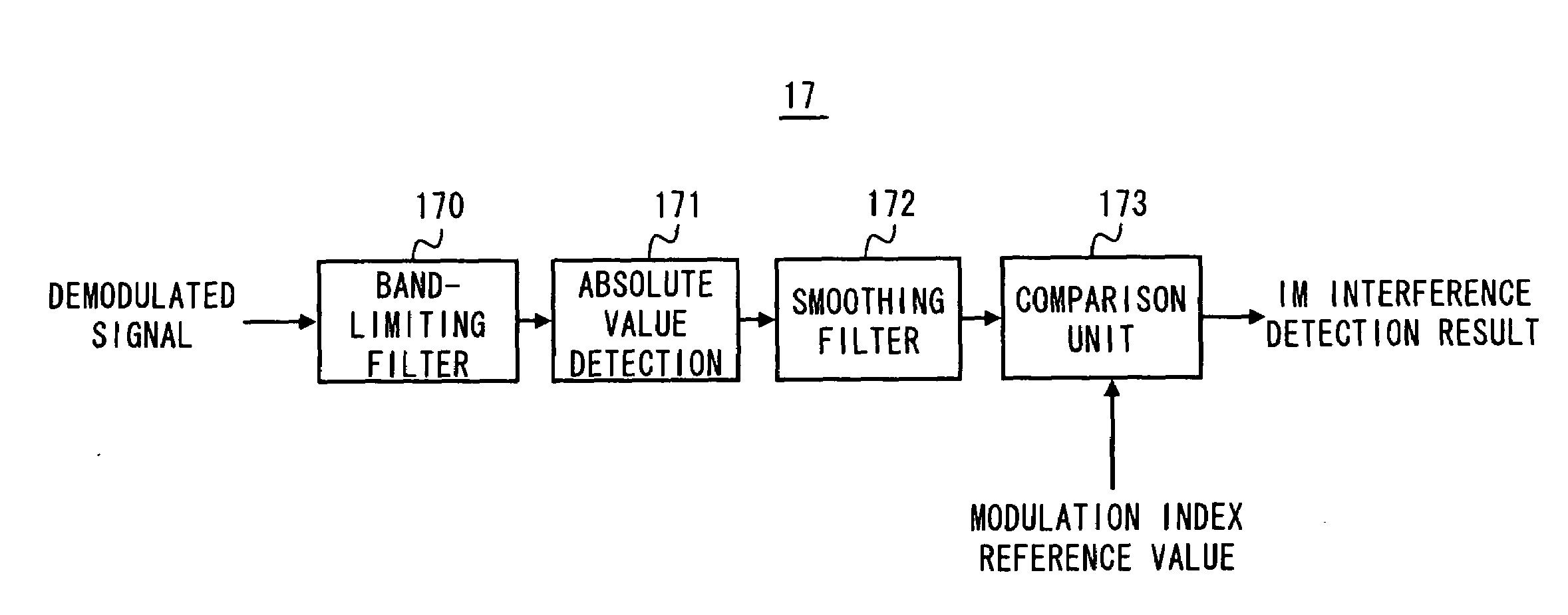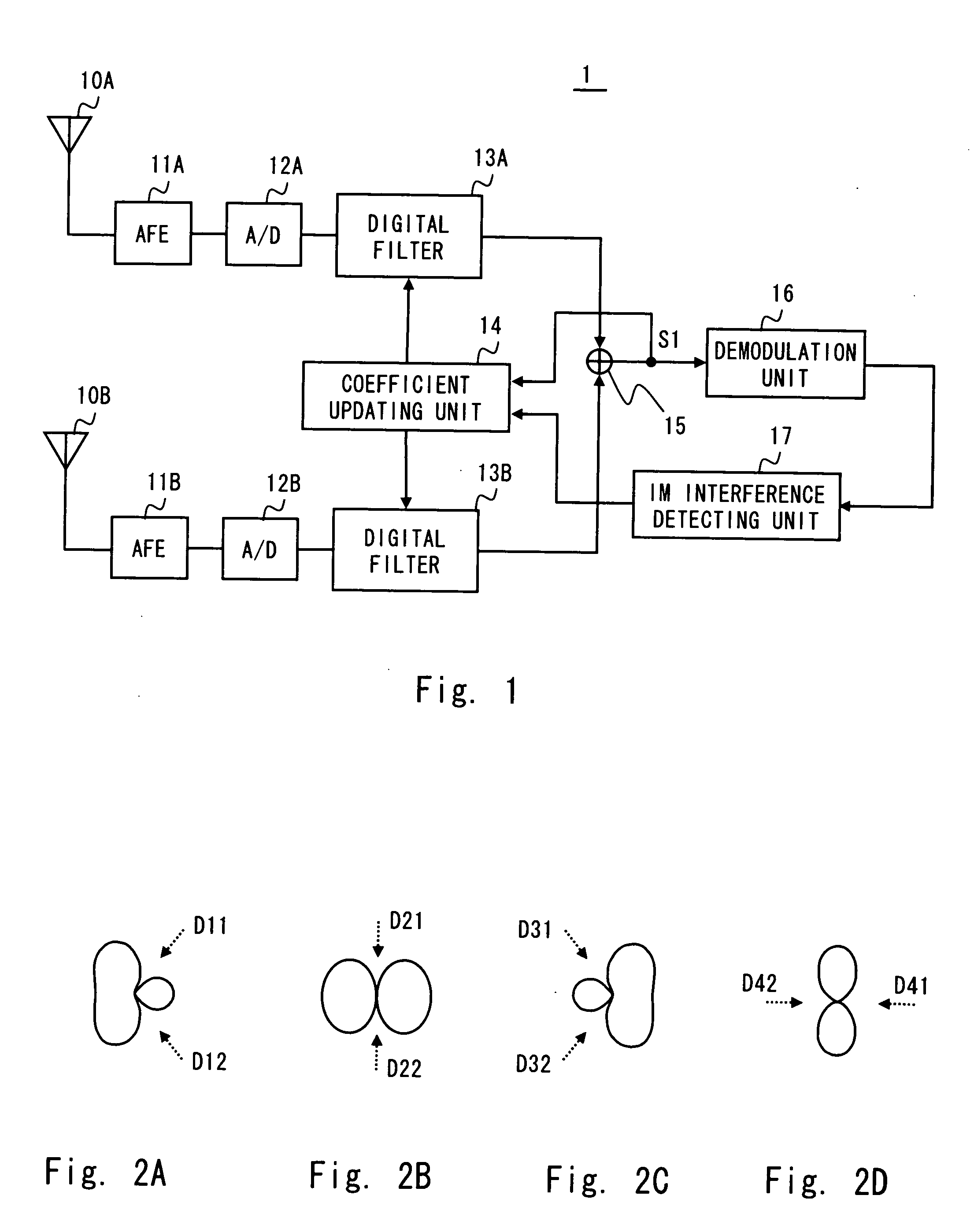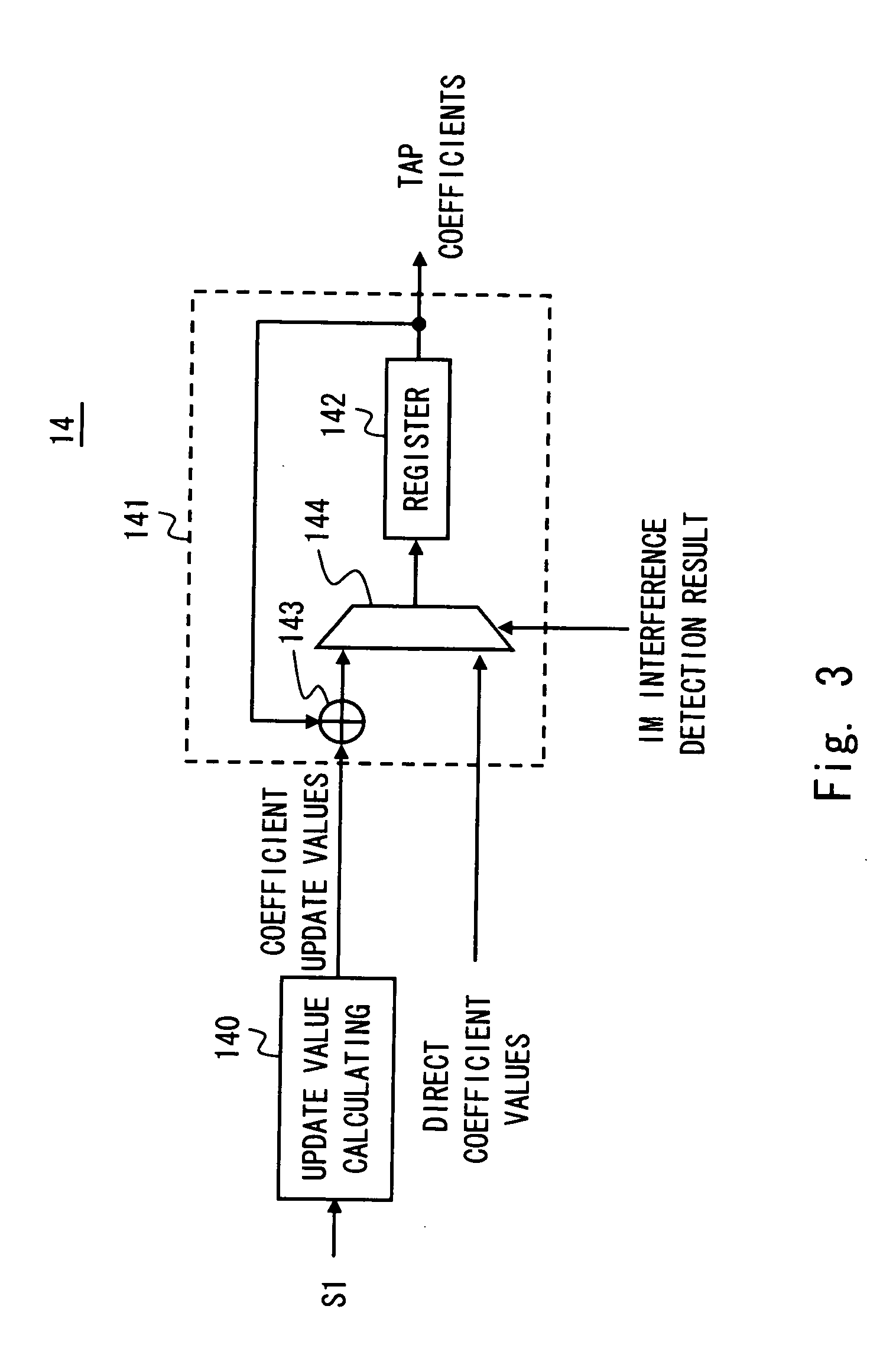Radio receiving apparatus and radio receiving method
a technology of receiving apparatus and receiving method, which is applied in the direction of electrical equipment, radio transmission, transmission, etc., can solve the problems of affecting the local directivity, the inability to recover from the state of local directivity adjustment, and the inability to actively receive interfering signals, so as to avoid the deterioration of the reception sensitivity of the desired signal and suppress the im interference
- Summary
- Abstract
- Description
- Claims
- Application Information
AI Technical Summary
Benefits of technology
Problems solved by technology
Method used
Image
Examples
first exemplary embodiment
[0035]A radio receiving apparatus 1 according to a first exemplary embodiment of the present invention adjusts amplitudes and phases of received signals received by a plurality of antenna elements, and then combines the received signals. The radio receiving apparatus 1 changes the adjustment amount of the amplitudes and phases of the received signals, to thereby make it possible to change the reception directivity of the plurality of antenna elements.
[0036]FIG. 1 is a block diagram showing a configuration example of the radio receiving apparatus 1. Components of the radio receiving apparatus 1 shown in FIG. 1 are described below. Antenna elements 10A and 10B each receive a radio signal. An analog front-end (AFE) 11A performs analog signal processing including band limitation of the radio signal received by the antenna element 10A, conversion of the radio signal into an intermediate frequency signal (IF signal), and amplification of the IF signal. An AFE 11B performs analog signal pr...
second exemplary embodiment
[0059]A radio receiving apparatus 2 according to a second exemplary embodiment of the present invention changes the reception directivity pattern of the antenna elements 10A and 10B so that the null direction is changed according to a detection of the occurrence of the IM interference as well as a judgment result of the quality of the demodulated signal.
[0060]FIG. 5 is a block diagram showing the radio receiving apparatus 2. A quality determining unit 28 shown in FIG. 5 determines how many components, which cause the reception quality to be lowered, are contained in the demodulated signal. Upon detection of the degradation of the reception quality such as the degradation of an S / N ratio, the quality determining unit 28 outputs a control signal to the coefficient updating unit 14 in a similar manner as the IM interference detecting unit 17.
[0061]The control signal output from the IM interference detecting unit 17 or the quality determining unit 28 is fed to the coefficient updating u...
third exemplary embodiment
[0064]A radio receiving apparatus 3 according to a third exemplary embodiment of the present invention is a modified example of the radio receiving apparatus 2. The radio receiving apparatus 3 differs from the radio receiving apparatus 2 in the mechanism for changing the directivity pattern of the antenna elements 10A and 10B.
[0065]FIG. 7 is a block diagram showing a configuration example of the radio receiving apparatus 3. The radio receiving apparatus 3 shown in FIG. 7 differs from the radio receiving apparatus 2 shown in FIG. 5 in the following points. That is, the digital filter 13B is omitted in the radio receiving apparatus 3 shown in FIG. 7. Meanwhile, in the radio receiving apparatus 3 shown in FIG. 7, an adder 31, a subtractor 32, and a switch 33 are disposed at the previous stage of the digital filter 13A. A coefficient updating unit 34 adaptively updates the tap coefficients by using an output signal S2 of the digital filter 13A.
[0066]The adder 31 adds digital IF signals ...
PUM
 Login to View More
Login to View More Abstract
Description
Claims
Application Information
 Login to View More
Login to View More - R&D
- Intellectual Property
- Life Sciences
- Materials
- Tech Scout
- Unparalleled Data Quality
- Higher Quality Content
- 60% Fewer Hallucinations
Browse by: Latest US Patents, China's latest patents, Technical Efficacy Thesaurus, Application Domain, Technology Topic, Popular Technical Reports.
© 2025 PatSnap. All rights reserved.Legal|Privacy policy|Modern Slavery Act Transparency Statement|Sitemap|About US| Contact US: help@patsnap.com



